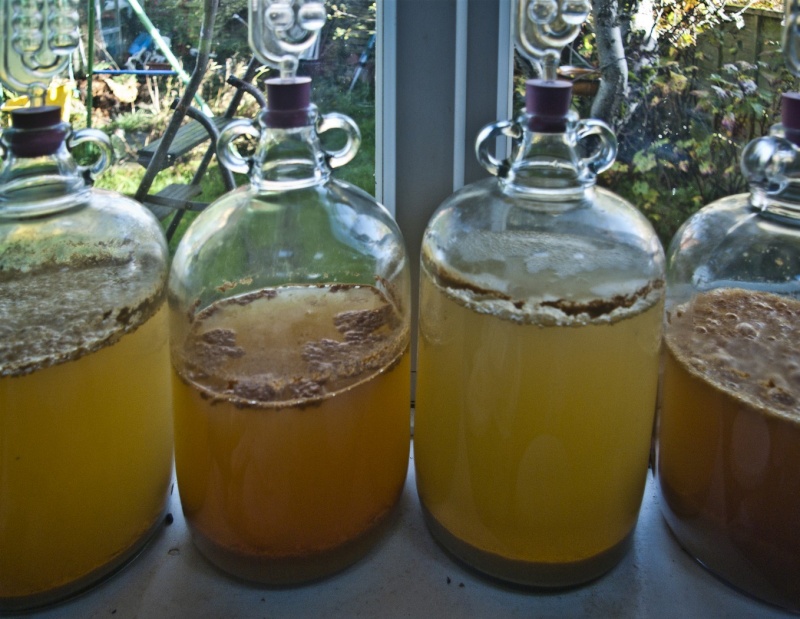ericmark
Regular.
I have a Juicer which with a centrifuge type action grates and separates juice from pulp and with a glut of apples turning into juice seems way to go.
However unless stored in the fridge the juice tends to ferment and the resulting pressure has in the past washed my ceiling in apple juice some thing I would like to avoid in the future.
However look up Cider Making and one is expected to press apples not juice them and with limited fridge room the juice will need to be left to ferment.
As the juice settles it separates into three distant levels. Bits that float, bits that sink and liquid in centre. When not left to ferment I would siphon out middle bit and dump the rest. However I have noticed when left to ferment the middle bit grows and the crust and sediment seem to decrease in size.
I remember buying scrumpy and finding it did not keep for over a week once in plastic gallon containers so I do not know how I can keep the apple juice/cider should I leave in demijohn until ready to drink or can I bottle and if I can bottle when can I bottle?
Next will be the pears and run out of air locks so would be nice to bottle rather than buy more air locks.

To left been around 1 week to right 1 day there seems to be local circulation with bits going around all the time like the first washing machine as a kid can't help watching it. However the air lock not that active 30 seconds between bubbles.
Any advice on how to handle this stuff and also should I add anything at the moment just added a little beer yeast to get started and that's it.
However unless stored in the fridge the juice tends to ferment and the resulting pressure has in the past washed my ceiling in apple juice some thing I would like to avoid in the future.
However look up Cider Making and one is expected to press apples not juice them and with limited fridge room the juice will need to be left to ferment.
As the juice settles it separates into three distant levels. Bits that float, bits that sink and liquid in centre. When not left to ferment I would siphon out middle bit and dump the rest. However I have noticed when left to ferment the middle bit grows and the crust and sediment seem to decrease in size.
I remember buying scrumpy and finding it did not keep for over a week once in plastic gallon containers so I do not know how I can keep the apple juice/cider should I leave in demijohn until ready to drink or can I bottle and if I can bottle when can I bottle?
Next will be the pears and run out of air locks so would be nice to bottle rather than buy more air locks.

To left been around 1 week to right 1 day there seems to be local circulation with bits going around all the time like the first washing machine as a kid can't help watching it. However the air lock not that active 30 seconds between bubbles.
Any advice on how to handle this stuff and also should I add anything at the moment just added a little beer yeast to get started and that's it.




